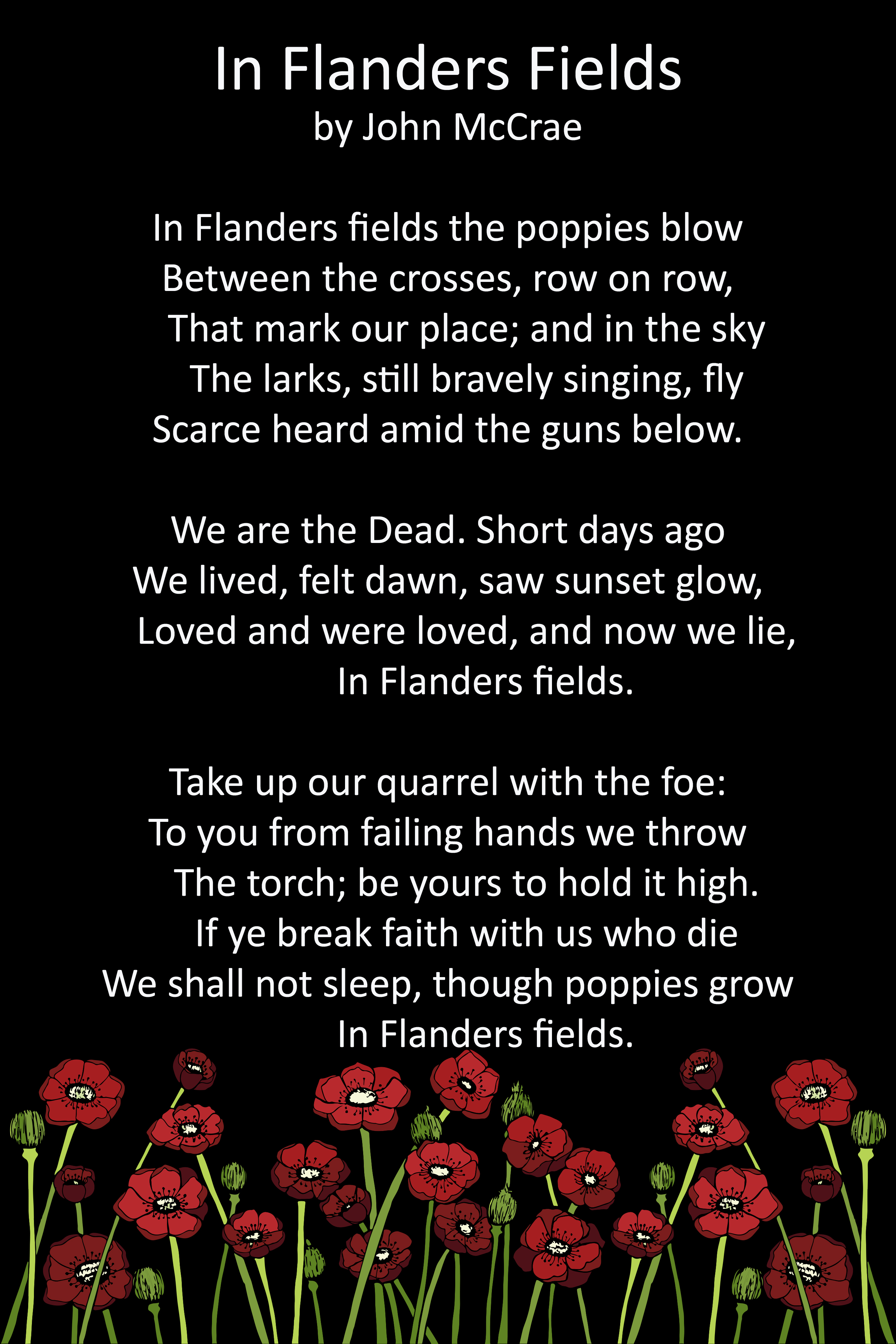Within a world that appears disjointed, something as simple as the symbol of a poppy can bring us together again. Its concept, born as the result of Col John McCrae’s poem ‘In Flanders Fields’, in which he wrote about the barren countryside of the Western Front and of the ‘flanders’ poppy he witnessed growing among the mud that remained amid the turmoil of war.
In Flanders Fields
by John McCrae

American academic, Mona Michael, inspired by the poem made and sold the original silk poppies to commemorate those who had died in WWI. This concept was taken on by the British Legion after they formed in 1921, when they ordered nine million poppies to sell on 11th November in support of veteran’s causes. Over £106,000 was raised and it was decided a factory should open, employing disabled ex-servicemen in order to produce poppies—which were put into full production.
Remaining our symbol of remembrance, the British Legion’s poppy appeal continues to raise millions each year for current servicemen and women across the UK.
Variations do now exist, however. For example, a purple poppy represents animals that have served during conflict. The charity, Animal Aid created the purple poppy in 2006 with the view that animals lost to war were forgotten victims—an estimated eight million horses and donkeys died during WWI which was portrayed through Michael Morpurgo’s book ‘War Horse’ (now both a movie and stage play).
Similar to our story, the French also wear a flower. The bleuet de France (or cornflower) is the symbol for, and solidarity with veterans, victims of war, widows, and orphans. They are sold both on 11th November and 8th May. Proceeds are used to finance charitable causes.
On the barren fields of the Western Front, much like the poppy, the cornflower also flourished and were often the only visible sign of life among the mud and trenches.
With war arrives propaganda and the ‘Bluets’ as they were known (very young soldiers arriving at the front line for the first time) would do so in uniforms ‘the colour of the sky’ which was symbolised embellished with cornflowers, giving war a glamorous image.
The French Bleuet de France badge itself dates back to 1916 and was created by Suzanne Lenhardt (head nurse) and Charlotte Malleterre (widow of a Col Infantry killed in 1915). Both women had been moved by the suffering endured by the war wounded and provided them with an activity by arranging workshops where cornflower badges were made from tissue paper. The money collected provided the men with a small income and the badges gradually became a symbol of rehabilitation of soldiers through labour.
Lest we forget.
by Donna Siggers and David Last
